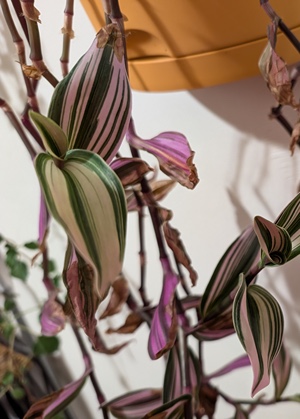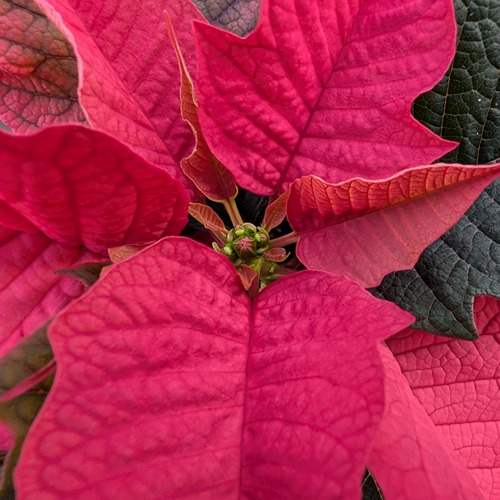Unleash your inner gardener: discover the joy of houseplants this season
Winter days can be dark and dreary, but Karen Mitchell, consumer horticulture Extension specialist, suggests brightening your home this season by adding house plants to your indoor décor.
“We often focus our gardening efforts outdoors, but winter is a wonderful time to try out our green thumb in our indoor living space," said Mitchell.
To introduce some green into your home, Mitchell shares why houseplants are beneficial, how to get started, and tips for helping them thrive.
What are the benefits of having houseplants?
With winter in full swing, there’s no better time to bring houseplants into your home. Not only can they enhance your decor, but they also offer a range of mood-boosting benefits. Mitchell notes that whether you're nurturing a tiny succulent or a lush leafy fern, cultivating houseplants allows you to connect with nature and create a serene atmosphere.
“We find that with minimal effort, houseplants are something we can watch flourish even in the dreary winter months. This effort can produce joy and confidence to people," she said.
She also believes houseplants can be a great way for those who have traditionally not succeeded in gardening to find confidence. "Many of these plants are easy to grow with minimal effort. The benefits of houseplants extend to the whole family."
How do I get started with houseplants?
Mitchell suggests evaluating where in your house would be best for plants. She notes that it is important to consider the temperature and light for the space where you want to put your houseplant. These two factors largely determine the type of plant to purchase.
Mitchell also suggests finding a variety of plants for your home at a local nursery as they can help you figure out which plants will thrive in your house. "Often, the local nurseries will have much healthier houseplants than you would find in a big box store."
If you're not sure which plant to bring home first, here are a few that Mitchell would suggest:

- Philodendron or Tradescantia (Wandering Dude): These two vining plants are very forgiving and can survive in either a north-facing or south-facing window but will grow quickly in bright indirect light. “When they get too long or too big for your space, just prune them back and use the cuttings to grow as gifts. These plants are truly the gift that keeps on giving,” said Mitchell.

- Sansevieria trifasciata (Snake Plant): This is a thick-leafed succulent that is remarkably resilient. Mitchell notes they do well in very low-light situations and are a great option for those dark corners or north-facing rooms. "These plants can thrive even when neglected and don't want to be over-watered," she said.

- Succulents: There are numerous types of succulents that will thrive indoors, and they come in a variety of shapes, colors, and sizes. Mitchell believes that succulents, such as jade or sedum, are a great starting houseplant for kids to try their hand at. They are often available in small pots and are low maintenance.
Tips for helping your houseplants thrive this winter
Mitchell likes to keep things simple and shares one important tip for all houseplant owners. "It might sound silly, but to most people, I suggest they give their plants a little less love." She notes she commonly hears people pampering their houseplants, thinking they are helping them, while they are actually harming them.
 "The most common reason that I see houseplants dying or getting diseases is because we love them too much," Mitchell said. Common mistakes she sees are over-fertilizing and watering. "We often just baby our plants too much, which can be our biggest downfall. To get started, find a few low-maintenance plants suitable for your space and then step back. As you become more familiar with your new roommates, you’ll begin to notice when they need water or more light.”
"The most common reason that I see houseplants dying or getting diseases is because we love them too much," Mitchell said. Common mistakes she sees are over-fertilizing and watering. "We often just baby our plants too much, which can be our biggest downfall. To get started, find a few low-maintenance plants suitable for your space and then step back. As you become more familiar with your new roommates, you’ll begin to notice when they need water or more light.”
Mitchell notes it is important to help your houseplants avoid extreme temperatures in the winter. "Most of our houseplants are native to tropical environments, and so a quick draft of cold air can really shock or even kill some of our house plants," she said.
Help protect your plants from the cold by taking these measures:
- Don't keep houseplants near exterior doors, where they are exposed to cold air drafts. Move them to a warmer spot, even if it is just for the winter months.
- If a plant is in a windowsill, be sure to keep it a safe distance away to prevent the leaves from touching the cold windowpanes.
- When you purchase plants, try protecting them from the cold during transport. Mitchell recommends covering them in a plastic bag and tying them up to transfer them home. Avoid leaving them in a cold vehicle for any amount of time.
Whether you opt for forgiving varieties like philodendrons, resilient snake plants, or delightful succulents, your journey into indoor gardening can be a rewarding experience for you and your family. Remember to keep it simple, avoid over-pampering, and protect your plants from harsh winter conditions. With just a little effort and care, you can create a vibrant indoor oasis that lifts your spirits and enhances your living environment.
Begin simply and have fun with it. Tending to your houseplants can be an activity the whole family can enjoy, and they are certainly something everyone in the home can benefit from. I recommend that everybody has plants in their house, at least one, but ten or more is ideal in my mind.
- Karen Mitchell, consumer horticulture extension specialist
Download this resource from Mitchell and Purdue Extension on caring for your houseplants.






